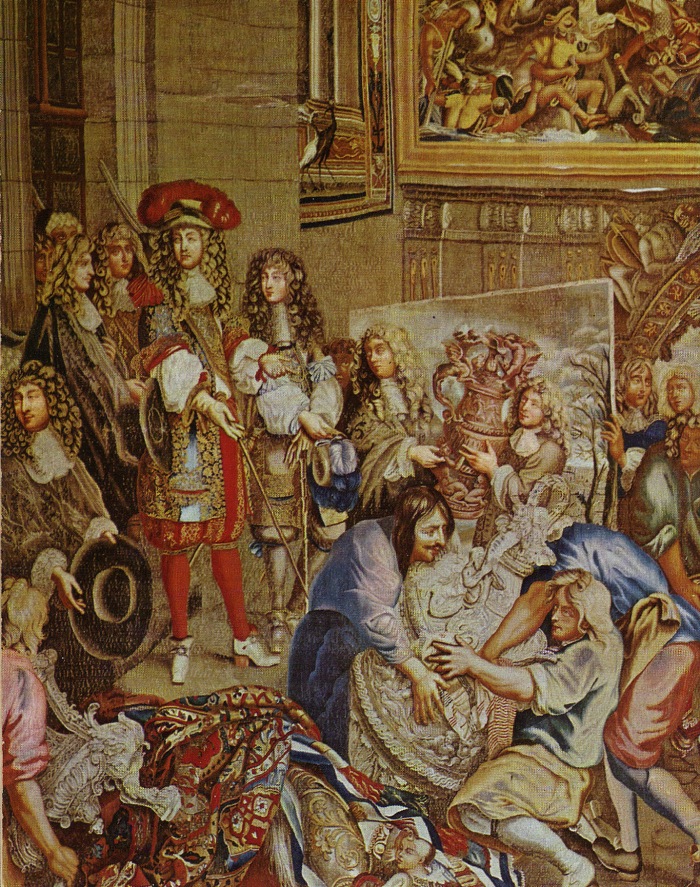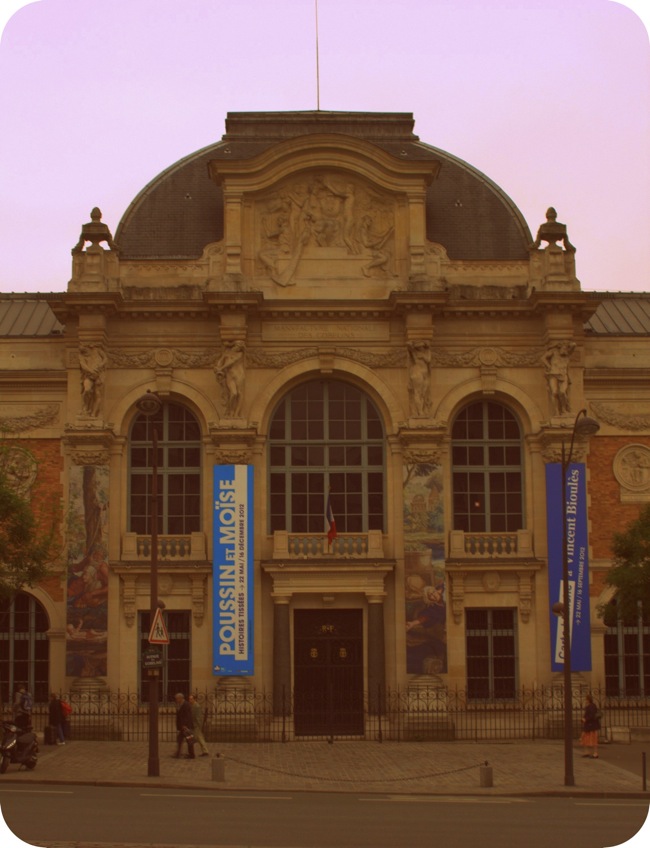Gobelins, Paris (Wikipedia)
Lister did not mention the Gobelins manufactory in his memoirs or pocketbook, but his travelling companion Philip Skippon described it:
At the Gobelins is a house where tapestry is made.
Created in 1664 by order of Jean-Baptiste Colbert, the Manufacture des Gobelins was established on the outskirts of Paris along the Bièvre River. It is now a compound of seventeenth-century buildings grouped behind a more modern edifice on the avenue des Gobelins, built by Formige in 1912. Charles Le Brun was chief designer and director of this royal tapestry and furniture works from 1663 until 1690.
Each tapestry
was created as part of a series of thematically linked tapestries, depicting subjects like the changing seasons or the months of the year. Le Brun had a special talent for celebrating the glory and passions of Louis XIV; among the most important series of tapestries he designed were ‘The Child Gardeners’, ‘The Story of Alexander’, ‘The Life of Louis XIV’, and ‘The Royal Residences’. 1
Early modern tapestries produced under the reign of Louis XIV have experienced a renaissance of popularity with modern collectors.
Tapestries hold their value because they are so painstaking to produce—the sort of artistic endeavor that makes perfect sense only for a monarchy with unlimited funds, time, and craftsmen. You first need an artist to sketch the design and a painter to turn that sketch into an oil that is the same size as the tapestry. Skilled masters then weave the tapestries using silk, wool, and sometimes gold or silver threads. But above all you need patience. . . it took two people three years to make a single tapestry. 2


